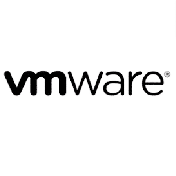Seminarinhalt
In this course, you will learn to:
- Identify the AWS services that support the different phases of Operational Excellence, an AWS Well-Architected Framework pillar
- Manage access to AWS resources using AWS accounts and organizations and AWS Identity and Access Management (IAM)
- Maintain an inventory of in-use AWS resources by using AWS services, such as AWS Systems Manager, AWS CloudTrail, and AWS Config
- Develop a resource deployment strategy using metadata tags, Amazon Machine Images (AMIs), and AWS Control Tower to deploy and maintain an AWS cloud environment
- Automate resource deployment by using AWS services, such as AWS CloudFormation and AWS Service Catalog
- Use AWS services to manage AWS resources through CloudOps lifecycle processes, such as deployments and patches
- Configure a highly available cloud environment that uses AWS services, such as Amazon Route 53 and Elastic Load Balancing, to route traffic for optimal latency and performance
- Configure AWS Auto Scaling and Amazon EC2 Auto Scaling to scale out your cloud environment based on demand
- Use Amazon CloudWatch and associated features, such as alarms, dashboards, and widgets, to monitor your cloud environment
- Manage permissions and track activity in your cloud environment by using AWS services, such as AWS CloudTrail and AWS Config
- Deploy your resources to an Amazon Virtual Private Cloud (Amazon VPC), establish necessary connectivity to your Amazon VPC, and protect your resources from disruptions of service
- State the purpose, benefits, and appropriate use cases for mountable storage in your AWS Cloud environment
- Explain the operational characteristics of object storage in the AWS Cloud, including Amazon Simple Storage Service (Amazon S3) and Amazon S3 Glacier • Build a comprehensive cost model to help gather, optimize, and predict your cloud costs by using services such as AWS Cost Explorer and the AWS Cost & Usage Report
Programm
Module 1: Introduction to Cloud Operations on AWS
- What is Cloud Operations
- AWS Well-Architected Framework
- AWS Well-Architected Tool
Module 2: Access Management
- AWS Identity and Access Management (IAM)
- Resources, accounts, and AWS Organizations
Module 3: System Discovery
- Methods to interact with AWS services
- Tools for automating resource discovery
- Inventory with AWS Systems Manager and AWS Config
- Hands-On Lab: Auditing AWS Resources with AWS Systems Manager and AWS Config
Module 4: Deploy and Update Resources
- Cloud Operations in deployments
- Tagging strategies
- Deployment using Amazon Machine Images (AMIs)
- Deployment using AWS Control Tower
Module 5: Automate Resource Deployment
- Deployment using AWS CloudFormation
- Deployment using AWS Service Catalog
- Hands-On Lab: Infrastructure as Code
Day 2
Module 6: Manage Resources
- AWS Systems Manager
- Hands-On Lab: Operations as Code
Module 7: Configure Highly Available Systems
- Distributing traffic with Elastic Load Balancing
- Amazon Route 53
Module 8: Automate Scaling
- Scaling with AWS Auto Scaling
- Scaling with Spot Instances
- Managing licenses with AWS License Manager
Module 9: Monitor and Maintain System Health
- Monitoring and maintaining healthy workloads
- Monitoring AWS infrastructure
- Monitoring applications
- Hands-On Lab: Monitor Applications and Infrastructure
Module 10: Data Security and System Auditing
- Maintaining a strong identity and access foundation
- Implementing detection mechanisms
- Automating incident remediation
Day 3
Module 11: Operate Secure and Resilient Networks
- Building a secure Amazon Virtual Private Cloud (Amazon VPC)
- Networking beyond the VPC
Module 12: Mountable Storage
- Configuring Amazon Elastic Block Store (Amazon EBS)
- Sizing Amazon EBS volumes for performance
- Using Amazon EBS snapshots
- Using Amazon Data Lifecycle Manager to manage your AWS resources
- Creating backup and data recovery plans
- Configuring shared file system storage
- Hands-On Lab: Automating with AWS Backup for Archiving and Recovery
Module 13: Object Storage
- Deploying Amazon Simple Storage Service (Amazon S3)
- Managing storage lifecycles on Amazon S3
Module 14: Cost Reporting, Alerts, and Optimization
- Gaining AWS cost awareness
- Using control mechanisms for cost management
- Optimizing your AWS spend and usage
- Hands-On Lab: Capstone lab for CloudOps
- Participate in team-based challenges in a real AWS environment
- Compete with your colleagues in a gamified, hands-on learning experience
- Apply your learning from the course on various AWS services
Zielgruppen
- System administrators and operators who are operating in the AWS Cloud
- Informational technology workers who want to increase their cloud operations knowledge
Vorkenntnisse
- Successfully completed the AWS Technical Essentials course
- A background in software development or systems administration
- Proficiency in maintaining operating systems at the command line, such as shell scripting in Linux environments or cmd/PowerShell in Windows
- Basic knowledge of networking protocols (TCP/IP, HTTP)
Trainings zur Vorbereitung
Wichtige Information
Wir weisen darauf hin, dass für ein erfolgreiches Absolvieren des Examens mindestens ein Jahr praktische Erfahrung mit AWS-Technologie empfohlen wird.






Guter Überblick der AWS services, imho empfehlenswert
Cloud Operations on AWS (formerly Systems Operations)
03.03.2020Guter Überblick der AWS services, imho empfehlenswert
— Guillaume R.Hat gepasst!
Cloud Operations on AWS (formerly Systems Operations)
02.03.2020Hat gepasst!
— Anatolij V.Etwas mehr Praxis waere gut gewesen, ansonsten top!
Cloud Operations on AWS (formerly Systems Operations)
03.06.2019Etwas mehr Praxis waere gut gewesen, ansonsten top!
— Stephan S.Passt Alles!
Cloud Operations on AWS (formerly Systems Operations)
18.10.2018Passt Alles!
— Gerard M.Very Nice!
Cloud Operations on AWS (formerly Systems Operations)
02.02.2018Very Nice!
— Christopher P.Sehr informativ, sollte vom Umfang her eher ein 4 Tage Kurs sein um mehr Zeit für die Praxis zu haben.
Cloud Operations on AWS (formerly Systems Operations)
02.02.2018Sehr informativ, sollte vom Umfang her eher ein 4 Tage Kurs sein um mehr Zeit für die Praxis zu haben.
— Bernd W.Ausgezeichneter Trainer, wirklich gute Labs, faszinierende Technologien und eine interessante Plattform.
Cloud Operations on AWS (formerly Systems Operations)
02.02.2018Ausgezeichneter Trainer, wirklich gute Labs, faszinierende Technologien und eine interessante Plattform.
— Philipp S.